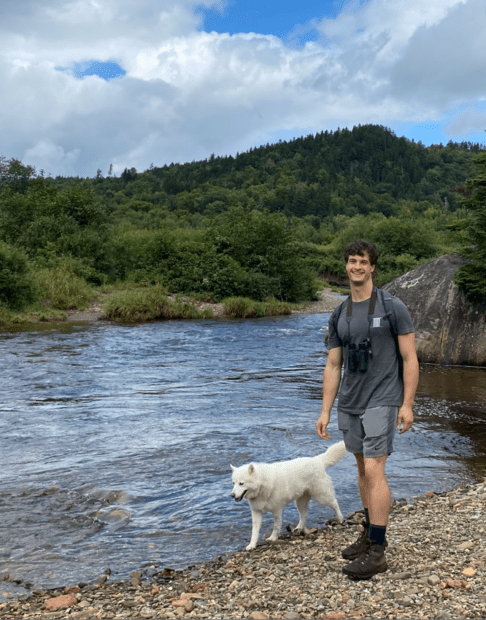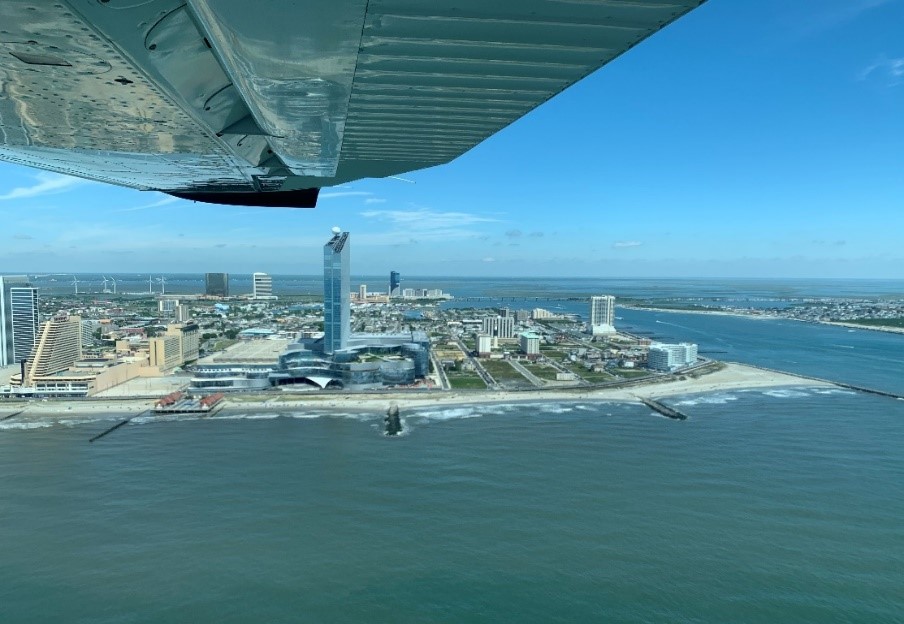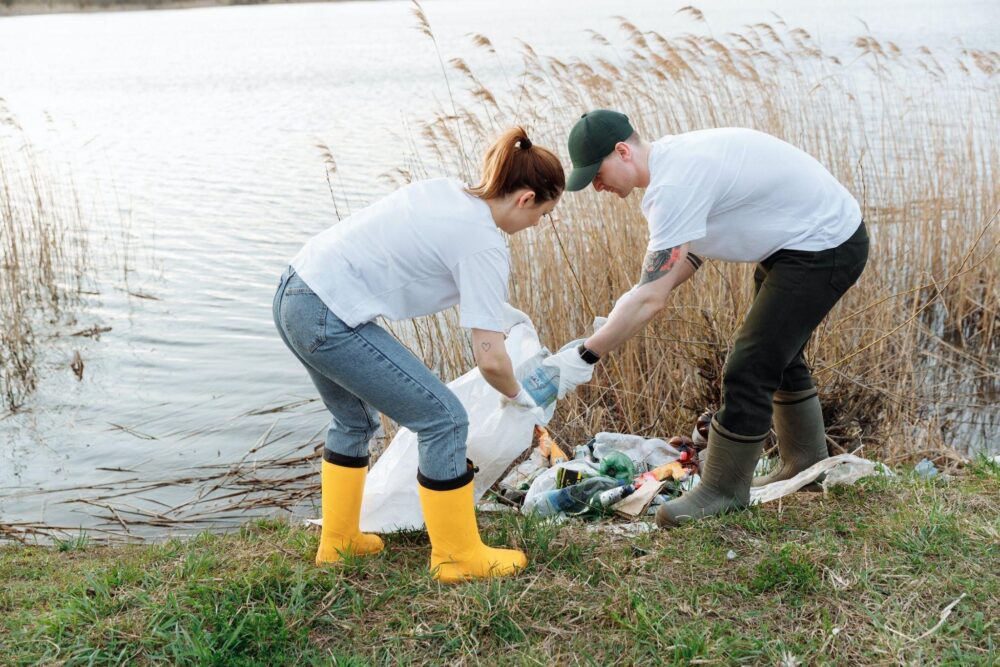We have much more to do and your continued support is needed now more than ever.
An Introduction from Our New Coastal Resilience Program Manager
Hello, Coastal Courant readers! My name is James Duffy, National Wildlife Federation’s new Northeast Coastal Resilience Program Manager. I’m excited to be writing my inaugural post for the Courant. Having joined the National Wildlife Federation about two months ago, I wanted to take a quick pause to introduce myself to our readers, and share with you the work you will see me advancing alongside my National Wildlife Federation colleagues and our many partners.
A quick introduction

I’m writing this post from my home near the White Mountains of New Hampshire, where I live with my partner and our rescue husky. I am, however, a native New Jerseyan, having moved to New England after graduating with my Master in Public Affairs from Princeton University this spring. When I’m not visiting project sites or meeting with partner organizations, you can find me working from the National Wildlife Federation’s Montpelier office. Outside of work, I’m usually birdwatching, gardening, or some combination of the two. (In fact, I’m planning to get my yard recognized as a Certified Wildlife Habitat through National Wildlife Federation this fall.)
Before going back to school for my Master’s, I worked for the New Jersey Department of Environmental Protection, where I managed habitat restoration and climate resilience grants for New Jersey’s aquatic ecosystems and coastal communities. Bringing partners together from across sectors to build healthier ecosystems and safer communities was one of my favorite parts of that work, and something that I look forward to doing here at National Wildlife Federation, with its rich history of leading coalitions for conservation wins and landscape-scale coastal resilience.
Our work: coastal policy, resilience projects, technical assistance, and more!

That brings us to my work at National Wildlife Federation.
The resilience of America’s coastal communities and ecosystems is one of the most critical climate challenges facing us. Today, 40% of Americans live in coastal counties, where sea-level rise is projected to significantly increase the destructiveness of floods and storms—a phenomenon we are already seeing firsthand. Meanwhile, we are rapidly losing our best natural defenses against coastal storms, as the lower 48 states lose as much as an estimated 80,000 acres per year of coastal wetlands due to sea level rise, subsidence, erosion, drainage, and development. The result is disappearing and degrading coastal habitats, declining wildlife populations, communities at risk, and billions of dollars of vulnerable built infrastructure.
These challenges are daunting, but they are not without solutions. At National Wildlife Federation, our work focuses on reducing coastal communities’ flood risk and increasing ecosystem resilience by advancing nature-based infrastructure, as well as restoring and protecting existing natural infrastructure like wetlands, dunes, and barrier islands. We do this by advancing strategic state and federal policy changes, implementing on-the-ground coastal resilience activities, and prioritizing partnerships with frontline, underserved communities where the obstacles to accessing nature-based strategies are highest. My colleague, Chris Hilke, has an excellent write-up on our community engagement efforts included in this issue of the Courant.
My role in all this is to expand National Wildlife Federation’s capacity for partnership, technical assistance, and project implementation into more coastal communities throughout the Northeast. For example, National Wildlife Federation recently launched a partnership with the Wayne County Soil Conservation District and the town of Wolcott, New York, on the southeastern shore of Lake Ontario. There, we are working with local stakeholders to prepare a living shoreline and breakwater design for project implementation funding proposals, and to develop a management plan for two local watersheds through a participatory stakeholder process. The result of this partnership will be a shovel-ready living shoreline design and a watershed management plan that can catalyze additional restoration investments in this Great Lakes community.
As an example of how vital strong partnerships are to this work, we came to work with the Wayne County Soil Conservation District and Wolcott through our strong relationship with the Coastal States Organization. With the Coastal States Organization’s support, we strengthened relationships with the New York coastal zone management program, who in turn used their state-specific knowledge to identify communities where National Wildlife Federation’s partnership could get needed projects off the ground.
Looking ahead
Nature-based resilience solutions are increasingly being recognized as cost-effective, protective solutions to coastal community flood risk and wildlife habitat loss. As National Wildlife Federation continues to bring these solutions to more communities, I look forward to bringing more updates on our work to the Coastal Courant readership!












